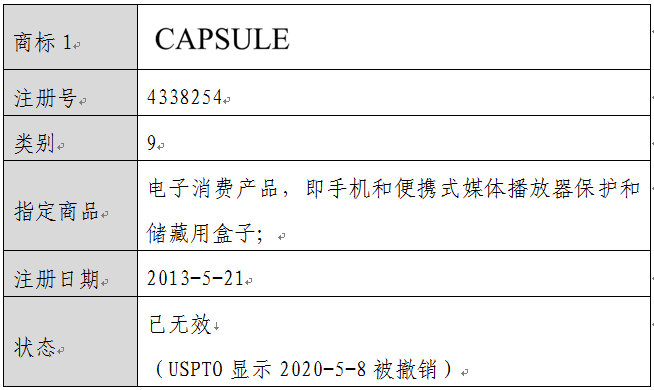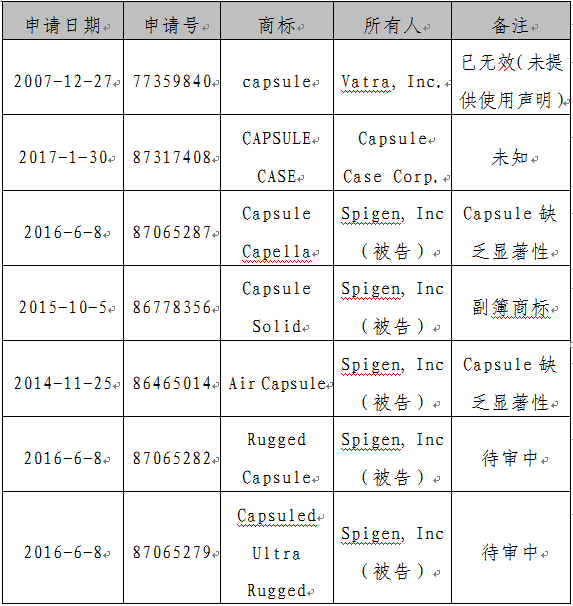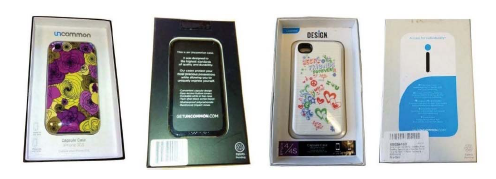Quotation
In order to help the city's "two districts" construction and the construction of an international science and technology innovation center, help "going to sea" enterprises better cope with overseas intellectual property disputes, and expand the international market with higher quality, Beijing Intellectual Property Rights Protection Assistance Center (Beijing Branch of National Overseas Intellectual Property Disputes Guidance Center) has organized, analyzed and compiled typical cases of intellectual property disputes in different countries or regions, conducted in-depth analysis from the aspects of legal system, litigation strategy and development trend, and summarized and formed practical experience guidance.
Starting from June 2022, we will rely on the wechat public account to carry out the exhibition and broadcast of typical cases of overseas dispute response guidance, promoting effectiveness with cases and bringing aspects with points, in order to provide guidance and reference for innovative entities to cope with overseas intellectual property disputes. Please pay attention.
Case keyword
Trademark infringement; Information disclosure; Trademark confusion; America
The case is an Uncommon trademark infringement dispute in the United States, with the plaintiff being Uncommon,LLC and the defendant being Spigen, Inc. Both plaintiff and defendant are manufacturers and retailers of mobile phone cases. The plaintiff began promoting the "CAPSULE" brand of phone cases in 2009, and the first transaction of this product occurred in July 2010. Then, in September 2012, the plaintiff applied to the United States Patent and Trademark Office for registration of trademark No. 4338254, the trademark information is as follows:

Due to the issue of the distinctiveness of the "capsule" trademark involved in this case, the following is a list of the United States Patent and Trademark Office's examination of the following trademarks for reference only:

1. Plaintiff's claim
According to the United States Federal Trademark Act (also known as the "Ranamo Act") and the relevant laws of the State of Illinois, the plaintiff believes that the defendant's unauthorized use of the "capsule" trademark infringes its trademark rights and constitutes unfair competition.
2. Plaintiff's cause of action
The Federal Court's examination of this case was flawed in three ways:
(1) The affidavit of Kirk Martensen was accepted;
(2) the plaintiff's trademark is revoked;
(3) The Defendant's use of the "capsule" trademark will not cause confusion to the relevant public.
3. Defense of the defendant
(1) The defendant has submitted a consumer research report and an expert affidavit to the court;
(2) The defendant applies for cancellation of the Plaintiff's trademark on the ground that the plaintiff's trademark is descriptive.
(2) Proceedings
Uncommon,LLC filed a lawsuit in December 2015 against defendant SPIGEN,INC., in the United States Federal Court for the Northern District of Illinois. Filed a trademark infringement lawsuit; The defendant petitioned the court to revoke the plaintiff's capsule trademark.
The evidence submitted by the defendant mainly includes: the consumer survey report conducted by KirkMartensen; An affidavit issued by DougBania based on a consumer research report to show that the plaintiff's trademark is descriptive and that the trademark has not acquired a second meaning through use; The defendant's use of the trademark "capsule" does not infringe its trademark rights and does not harm the plaintiff's evidence.
At the summary judgment stage, the plaintiff pointed out that during the disclosure of information in the case, the expert hired by the defendant, KirkMartensen, admitted in his submission that "he is not an expert in the field of investigation methodology" and therefore the evidence submitted by the defendant should be inadmissible. At the same time, the defendant tried to make up for the lack of disclosure of information in the earlier stage by submitting KirkMartensen's affidavit, stating that he had explained the specific methodology of the investigation report in the early stage of the preparation of the report. However, the plaintiff insists that the supplementary documents at this stage do not meet the relevant procedural provisions and are invalid evidence. Even if this evidence is valid, it does not prove that KirkMartensen is an expert in survey methodology.
In March 2018, the Federal Court heard that:
(1) Although the evidence submitted by the defendant is flawed, it has no material impact on the case itself;
(2) The plaintiff's trademark is descriptive and does not acquire a second meaning through use, so it is ordered to cancel the trademark;
3. The Defendant's use of "capsule" would not have caused confusion among the relevant public.
For the above reasons, the original reason for telling the defendant that the use of "capsule" infringes its trademark rights and constitutes an act of unfair competition is not valid.
The plaintiff refused to accept the decision of the federal court and submitted an appeal application to the Seventh Circuit Court in April 2019, which rejected the appeal request after hearing and upheld the original judgment.
(3) The outcome of the hearing
The Circuit court heard the plaintiff's different claims and the focus of the dispute between the two parties, and finally found that the plaintiff's reasons for appeal were not founded, and upheld the original federal court's decision that the defendant's trademark use did not constitute trademark infringement; At the same time, it is determined that the plaintiff's trademark is descriptive and the plaintiff's trademark is revoked.
1. Whether the consumer investigation report and affidavit of KirkMartensen submitted by the defendant are accepted
The Circuit Court found that the defendant violated the law by failing to disclose in the disclosure process that KirkMartensen was an expert in providing consumer research reports. However, the federal court held that because the defendant's act did not lead to the termination of the proceedings, it did not adversely affect the plaintiff. In addition, according to the relevant provisions of Article 37 (c) (1) of the Federal Civil Procedure, the defendant's above error is an exception provided by the law, so the court accepted the defendant's consumer investigation report.
The Circuit Court agreed with the Federal court on the following grounds:
First of all, when judging whether the defendant's misbehavior in the information disclosure stage belongs to the special circumstances stipulated by law, that is, "no material impact or no disadvantage to the case", the following factors should be comprehensively considered: whether the evidentiary materials involved will cause the other party's wrong cognition or accident; The ability of the other party to avoid misperceptions; To undermine the possibility of such action; A malicious or intentional act of not disclosing evidence in advance.
Based on the above elements, the Circuit Court held that: first, Defendant's failure in the disclosure stage did not surprise Plaintiff, and Defendant promptly disclosed KirkMartensen's investigation and underlying data, submitted KirkMartensen's qualification documents, and DougBania's affidavit based on the investigation report. Thus the survey report has explained the methodology adopted by KirkMartensen and the rules of acceptable research. Second, the defendant's conduct did not result in the termination of the proceedings. Third, although the plaintiff believes that the defendant's mistakes make it unable to question the rationality of the methodology in the investigation report submitted by the defendant in a timely manner, nor can it find a forensic expert, the plaintiff can still question the investigation report submitted by the defendant, and the plaintiff can also submit a separate consumer investigation report to refute the defendant's views, or require the defendant to further disclose relevant information. The Circuit Court held that the defendant's incomplete disclosure did not cause the plaintiff to suffer a loss, and even if the plaintiff did suffer a loss, the loss was not irreparable. Therefore, the defendant's conduct is a special circumstance under the law, and the evidence submitted by him should be admitted.
2. Validity of Plaintiff's trademark
There are two ways to maintain the validity of the plaintiff's trademark: first, the trademark is suggestive rather than descriptive; Second, the trademark obtains the second meaning through the use, and has the significance of the trademark.
Because the plaintiff did not submit relevant evidence to prove that the trademark acquired a second meaning through use, and after the United States Patent and Trademark Office decided to revoke the trademark, the plaintiff filed a review on the non-descriptive of the trademark, so the Circuit court held that this case only on whether the trademark is descriptive.
First, the defendants submitted substantial evidence that many in the industry used the term "capsule" to refer to phone case products on a variety of occasions. However, the plaintiff did not submit any evidence to prove that the trademark was distinctive, and only argued that other market players had attempted to free ride by using capsule. Such a statement is obviously inadequate.
Second, the circuit court adopted the imagination test often used in determining whether a trademark is descriptive. According to the tests, because "capsule" has the characteristics of a phone case, that is, encapsulation, storage, and protection, the word "capsule" used on specific products such as phone cases is more descriptive.
Third, although dictionaries cannot be relied upon to determine whether a trademark is descriptive, the dictionary in this case clearly states that "capsule" is defined as "a small shell, envelope, or covering" and that "such an object can contain an object." The plaintiffs did not challenge this interpretation. So the dictionary definition further explains that "capsule" is descriptive.
Fourth, the Circuit Court also referred to the United States Patent and Trademark Office's registration of the "capsule" trademark. As noted above, although the United States Patent and Trademark Office has successively approved Vatra,Inc. "capsule" and the trademark of the plaintiff in this case, but according to the latest review trend of the United States Patent and Trademark Office, examiners are more inclined to identify "CAPSULE" as a descriptive term.
In summary, the Circuit Court found that the federal court's cancellation of Plaintiff's trademark was consistent with the law.
3. Possibility of confusion of the original defendant's trademark
In determining whether the defendant's use of the "capsule" trademark would cause public confusion about the origin of the goods, the Circuit Court adopted the following seven elements, which were analyzed in detail as follows:
(1) Trademark similarity
The Circuit court considered the actual use of the parties' trademarks, rather than just comparing the similarity of the trademarks in isolation. The trademark usage of both parties is as follows:

(Plaintiff's mobile phone case)

(Defendant's phone case)
Both trademarks use sans-serif font, black font, and "capsule" is used independently. Although they are in different positions on the packaging, they constitute an approximation from the perspective of the overall use of the trademark.
(2) commodity similarity
Both parties acknowledge that the goods using the trademark are smart phone cases, and there is no dispute that the goods used by both parties constitute similar issues.
(3) The trademark is used on the specified goods in the region and form of use
(4) The degree of attention of the relevant public
Because the goods involved are very common and not expensive, the consumers involved usually do not need to pay special attention when purchasing them.
(5) whether the plaintiff's trademark is distinctive and well-known enough to cause public confusion
First, as previously stated, the plaintiff's trademark lacks distinctiveness and has not acquired distinctiveness through use.
Second, the plaintiff failed to prove that its trademark had been used extensively, and through analysis of the investigation report submitted by the defendant, it can be seen that most of the relevant public did not establish a unique corresponding link between "capsule" and the plaintiff. At the same time, the parties used the capsule without placing it in a prominent position, making it difficult for the concerned public to confuse a sign that might be missed.
(6) Actual confusion
The plaintiff did not submit any evidence of actual confusion.
(7) The defendant's intention to pass off the plaintiff's trademark
The plaintiff did not submit any evidence that the defendant used capsule in bad faith or that the conduct was an act of unfair competition.
In summary, the Circuit Court upheld the federal court's finding that trademarks, while similar, do not cause consumer confusion about the origin of the product.
(2) Litigation strategies of both parties
1. Plaintiff litigation strategy
(1) the plaintiff has brought a trademark infringement action based on its prior trademark rights;
(2) The plaintiff takes advantage of the defendant's mistakes in the information disclosure stage to persuade the judge not to accept the defendant's evidence at the judgment stage.
2. Defendant litigation strategy
(1) Actively respond to the lawsuit, while promptly applying for the cancellation of the plaintiff's prior trademark;
(2) Attach importance to the legal procedures prescribed by local laws and actively participate in the legal procedures as required;
(3) Adopting the most effective evidence in trademark infringement cases - consumer survey reports.
1. Attach importance to international litigation and actively respond to litigation
When domestic enterprises receive international litigation notice, they must not be despised or ignored, and should adjust their mentality. On the one hand, actively use diversified dispute resolution methods, actively respond to lawsuits through various legal channels, and timely organize a lawyer team to evaluate the strength of both sides to find a proper lawsuit plan; On the other hand, try to seek reconciliation in order to maximize their own interests and minimize possible losses.
2. Analyze relevant claims and make counterclaims in time
When a domestic enterprise receives an official notice of a relevant infringement lawsuit, it should promptly understand the relevant local policies and take relevant measures in a timely manner, such as a pre-lawsuit injunction or filing a cancellation/invalidation application for the relevant rights of the other party, in order to disintegrate the prior rights of the other party and create opportunities to win the lawsuit.
In this case, the trademark actually used by the accused infringer on the goods and the trademark of the prior right holder constitute similar trademarks on similar goods. If the application for cancellation of trademark rights is not filed in time, the possibility that the accused infringer's use of "capsule" will be judged as infringement of its trademark rights will be greatly increased.
3. Fully understand the legal procedures of the country/region where the dispute is occurring
Fully understand the legal procedures in the place where the dispute occurs and actively participate in the proceedings in accordance with local requirements. Because most of the overseas infringement disputes are based on the relevant intellectual property laws orunfair competition lawTherefore, the litigation procedure is more complex, the litigation procedure is closely linked, if missed any of the procedures, may affect the outcome of the case.
(2) Reflections on domestic enterprises
1. Choose the trademark correctly and carry out the trademark layout in time
The most important thing for Chinese enterprises to enter overseas markets is to carry out trademark layout in a timely manner, and if they carry out trademark layout after overseas trademark infringement disputes, it can only be "repaired after the loss of time". Therefore, in the start-up stage of enterprises, it is necessary to establish overseas brands in a timely manner and apply for trademark registration.
When selecting a trademark, it is necessary to choose original, distinctive words or graphics or other components stipulated by local laws, and avoid the use of descriptive words, undesirable words and other words that do not have the ability to distinguish the source of goods or services. In addition, it is recommended that domestic enterprises avoid well-known brands when choosing trademarks to avoid the suspicion of brand-name. It is also necessary to pay special attention to avoid the more used words in the industry, so as not to eventually become a common name and lose trademark rights.
2. Attach importance to standardized brand management
As the domestic enterprises are increasingly moving towards the international market, it is very important to pay attention to brand building, improve brand quality, pay attention to brand standardized management and grasp market share. Domestic enterprises should adhere to the principle of fair competition, mutual benefit and win-win, and create a good international environment for brand development.
3. Pay attention to the continuous use of trademarks, and regularly save evidence of use
Brand owners need to pay attention to the standardized use of the brand to avoid the loss of rights and even infringement due to the non-standard use of the trademark.
In this case, the plaintiff did not submit relevant use evidence in the course of litigation to prove that its trademark has established a stable consumer group through extensive use and that its trademark has established the only stable connection with itself; Nor did any evidence of trademark use be submitted to prove that the trademark acquired a second meaning through heavy use, which made the trademark not obtain the due significance, and eventually led to the trademark being judged to be descriptive and revoked.
If the trademark owner actively uses the trademark, even the relatively weak trademark may be given a second meaning through a long period of heavy use, so as to maintain the registration when it is revoked by a third party.
In addition, pay attention to the use of trademarks, enhance brand image and visibility. It is recommended to register and use fonts, colors and VI designs that conform to the brand image, and use trademarks in prominent positions of product packaging to help consumers identify the brand image and distinguish the source of goods. It can also establish a positive brand image in the minds of consumers through long-term large-scale use, establish a unique designated link between the trademark and the enterprise, and improve brand awareness and reputation.
4. Pay attention to overseas litigation teams
Since domestic enterprises are not familiar with the local legal system on the one hand, on the other hand, the legal time limit and legal procedure requirements of different countries/regions are different, timely rapid response to litigation helps to master a certain initiative in litigation, so paying attention to overseas litigation teams has an important lubricating effect on domestic enterprises going out.
Especially for cases with short statute of limitations, timely use of local special procedures for counterclaims, evidence fixation, etc., can win a certain initiative for overseas litigation.
5. Pay attention to the policies of the central government and local governments
In view of the complexity and high cost of overseas rights protection and infringement cases, domestic enterprises can pay attention to the policy support of the central finance and local governments for overseas rights protection and infringement cases before entering the target market, including but not limited to rights protection experts, platforms, funding policies, etc. (Source: Capital Intellectual Property Services Association, Kangxin Knowledge Property)
More information and services
The official subscription number of "Shenkexin Intellectual Property Rights" on the code

Code on the concern [Shenkexin intellectual property service platform] official service number

Related Cases
Nanjing Dapai has won two trademark cases against it in Anhui. On July 11 and August 31, 2022, the Hefei Intermediate People's Court successively ruled in two judgments that Nanjing Dahui Enterprise Development Co., LTD. (referred to as Nanjing Dahui), the owner of Nanjing Dahui File, won the case.
2022-09-21
Trademarks can not be used at will, infringement "business" can not be done!
When it comes to intellectual property, this is a topic that is often neglected, but is closely related to everyone. When you open a book at random, when you buy a bottle of toilet water or a lipstick, when you chat with friends on wechat send a meme... Recently, the People's Court of Luxi County in Jiangxi Province successfully mediated a intellectual property dispute.
2022-09-20
No. 38765119 "Lipstick First Brother" trademark objection case
Cui Shudong, Director of the Trademark Office of the State Intellectual Property Office, pointed out at the release and interpretation of the "2021 Typical Cases of Trademark Opposition and Review" that the trademark opposition and review procedure is an important part of the trademark authorization and confirmation, which plays an important role in strengthening the source protection of intellectual property rights and optimizing the business environment.
2022-09-20
Recently, the Beijing Intellectual Property Court concluded a dispute over unfair competition involving the malicious registration of the "Gubei Water Town" trademark and abuse of trademark rights.
2022-09-16
Recently, Shanghai Minhang Court concluded a dispute on infringement of the "Moutai" registered trademark rights. Coincidentally, in April this year, a liquor company in Chengdu, Sichuan province, was accused of infringing on the "Moutai" trademark.
2022-09-13
"Dali" against "Dali Garden", see this "trademark attachment" behavior how the court adjudication
Brand is an important carrier to build a modern economic system, but also to promote high-quality economic development and enhance international competitiveness of the core elements. In recent years, Fujian courts have given full play to the functions of the people's courts in combating infringement and counterfeiting and optimizing the business environment. By strengthening the trial of cases in key areas such as platform economy, scientific and technological innovation, information security and livelihood protection, and timely releasing typical cases, Fujian courts have strengthened the judicial protection of well-known trademarks, well-known brands and time-honored brands, effectively promoting fair market competition. We will maintain the normal order of the market and guide the whole society to form a good atmosphere of respecting intellectual property rights, operating with integrity, cultivating brands, and encouraging innovation.
2022-09-09
Yao Anna No. 36878950 "Yao Anna" trademark was applied for registration by the respondent Guo, approved for use in cosmetics and other commodities. The trademark was declared invalid by Yao Siwei and Huawei Technologies Co., LTD. (i.e., applicants 1 and 2 in this case). Applicant 1, whose stage name is "Yao Anna", is well known due to his association with Applicant 2 and Ren Zhengfei. The respondent failed to provide a reasonable source for the word "YAOANNA", and maliciously registered YAO Anna's English name "ANNABEL YAO" and pinyin "YAOANNA" and "Yao Anna".
2022-09-05
Recently, the People's Music Publishing House Co., Ltd. added a court announcement, the case of infringement of trademark rights disputes. Plaintiff: People's Music Publishing House Co., LTD. Defendant: Shaoxing City Shangyu District Mingyin Music Company.
2022-08-31
There are many "West Gate" appliances, Siemens has sued the court in fact, consumers want to buy Siemens appliances but bought back "West Gate" is not a case. These users who buy "West Gate" electrical appliances are basically introduced to buy goods, and when they buy, the other party is introduced to "Siemens" and "big brand". In October last year, Ms. Wang of Zhengzhou also bought a "West door opening" for the new home to add a lampblack machine, and finally complained to the market supervision department. In July last year, Shenzhen Siemens L & Auer Electrical Equipment Co. Ltd. was also sued by Siemens China for trademark infringement.
2022-08-30
Tingyi has also been caught up in trademark infringement cases. Once Master Kang was "Kang Shuaifu" played around, and now "Master Kang" is often due to "trademark infringement", "unfair competition" into everyone's vision.
2022-08-24
Telephone:
Telephone:+86-755-82566227、82566717、13751089600
Head Office:13 / F, Building 14, Longhua Science and Technology Innovation Center (Mission Hills), No. 8 Golf Avenue, Guanlan Street, Longhua District, Shenzhen
Head Office:
13 / F, Building 14, Longhua Science and Technology Innovation Center (Mission Hills), No. 8 Golf Avenue, Guanlan Street, Longhua District, Shenzhen
Subsidiary Company:2808, Block B2, Yuexiu Xinghui Junbo, No.18 Tazihu East Road, Jiangan District, Wuhan City, Hubei Province
Subsidiary Company:
2808, Block B2, Yuexiu Xinghui Junbo, No.18 Tazihu East Road, Jiangan District, Wuhan City, Hubei Province

Service Number

Subscription Number
Copyright ©2016 Shenzhen Shenkexin patent Agency Co., LTD All rights reserved | 粤ICP备2021174526号
Copyright ©2016 深圳市深可信专利代理有限公司 版权所有 | 粤ICP备2021174526号 SEO标签
Copyright ©2016 深圳市深可信专利代理有限公司 版权所有